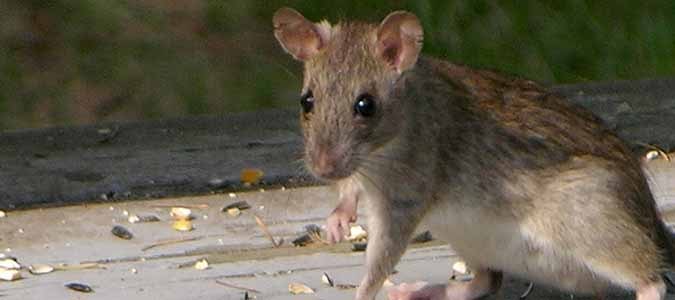
There are many reasons that Americans are increasingly moving to the southern states. Our warm sunny days, green spaces, majestic trees and outdoor patio restaurants offer many ways for residents to enjoy spending time exploring these cities.
Guess what? All of the things that make these urban areas so appealing to people also make it an ideal habitat for local rat populations. In this post, we’ll answer the common question: Do rats eat acorns?, as well as discuss what rats we are most likely to see and how to keep these creatures away from your home.
The Ideal Rat Habitat
Rats love greenbelt areas with access to water, lush vegetation, seeds and other food sources. They eat nuts, seeds, vegetables and fruit, worms, lizards and various bugs, including spiders and roaches. When desperate, they’ll eat green plants, paper or even candle wax. Rats frequent areas with lots of pecan trees and they also find acorns from live oak trees to be quite tasty. So yes, rats eat acorns—as do mice and other rodents.
During the summer months, roof rats often are able to fend for themselves in our green spaces as well as gardens and homes with outdoor pets or chickens. Rats don’t stay outside, however. They can find openings in the roof of your home, including areas in the fascia and soffits, and nest in your attic or walls.
Holes as small as a quarter are no challenge to a roof rat, and once inside, your attic provides a safe and comfortable place for them to reproduce. They tend to gather together to protect each other and travel in packs, and they can have as many as 60 babies in a single year. That means it’s highly likely that once a rat finds his way into your home, many more will follow.
Rattus rattus
Most rats in the southern states are a species known as roof rats (Rattus rattus). These smaller brown and black rats are different from Norway rats, which are a larger breed found throughout most of the rest of the country. Roof rats prefer our warmer climate and live in trees, bushes and woodpiles during the summer. Because they don’t burrow like their northern cousins, they go looking for warmer places to nest in the winter.
How Weather Affects Rat Populations
Texas A&M AgriLife experts suggest wet weather contributes to rat population growth, for it causes grasses and weeds to grow quickly and go to seed, offering a significant bounty for a hungry rat. When winter follows a wet autumn, an increased rat population will become noticeable in our homes and storage sheds, as there are more rats looking for a warm place to call home.
Signs Of Rats In Your Home
Roof rats dislike change or activity and tend to nest in places where they won’t be disturbed. Quiet attics, crawl spaces, ductwork and even the void between walls make excellent nesting locations. To enter your home, they just need small gaps in the roof, eaves or doorways. Some rats may enter through drainage pipes, exhaust fans or ventilation.
There are several warning signs that you might have rats (or other rodents, including squirrels) in your home:
- Holes in the roof or in surrounding fascia or soffits at the roof line
- Scratching or squeaking sounds in the walls or ceiling
- Small black droppings on the floor, especially in the kitchen or other areas where food may be stored
- Smears or tracks in dusty areas
- Chewed paper, plastic containers and wood molding
- Musky odor
- Upset dogs or cats (they can sense the presence of rodents before humans do)
If you suspect you have rodents in your home, it’s important to take quick action before they can reproduce or cause additional damage.
Controlling Rats On Your Own
There are two steps experts recommend to deal with rats in and around the home: prevention and eradication.
To prevent rats from getting into your house, first, make sure they aren’t attracted to your yard and home in the first place. Remove wood piles and brush, and mow weeds and grass regularly. Don’t leave pet food outside and clean up spilled food from bird feeders or chicken coops. Clear away acorns and other potential food sources from your yard.
Check for access points to your home. Inspect your roof and siding as well as any crawl spaces under the house. If they have no easy way inside your home, they may look elsewhere.
If you’re unlucky enough to have rats in your home, you can trap them and relocate them with live traps. These are humane and safe options. Using poison is not a good idea, as other animals can get into the poison (including pets), and you cannot control where rats die. We also discourage sticky traps and snap traps where possible, as both can injure rats without killing them.
Are Rats Driving You Nuts?
Rats are an ever-present issue in urban areas. Don’t let them worry you. Give ABC Home & Commercial Services a call. We have pest control experts who can come out to your home and find solutions to your rat problem. We offer humane and environmentally-friendly solutions that will bring you peace of mind.
